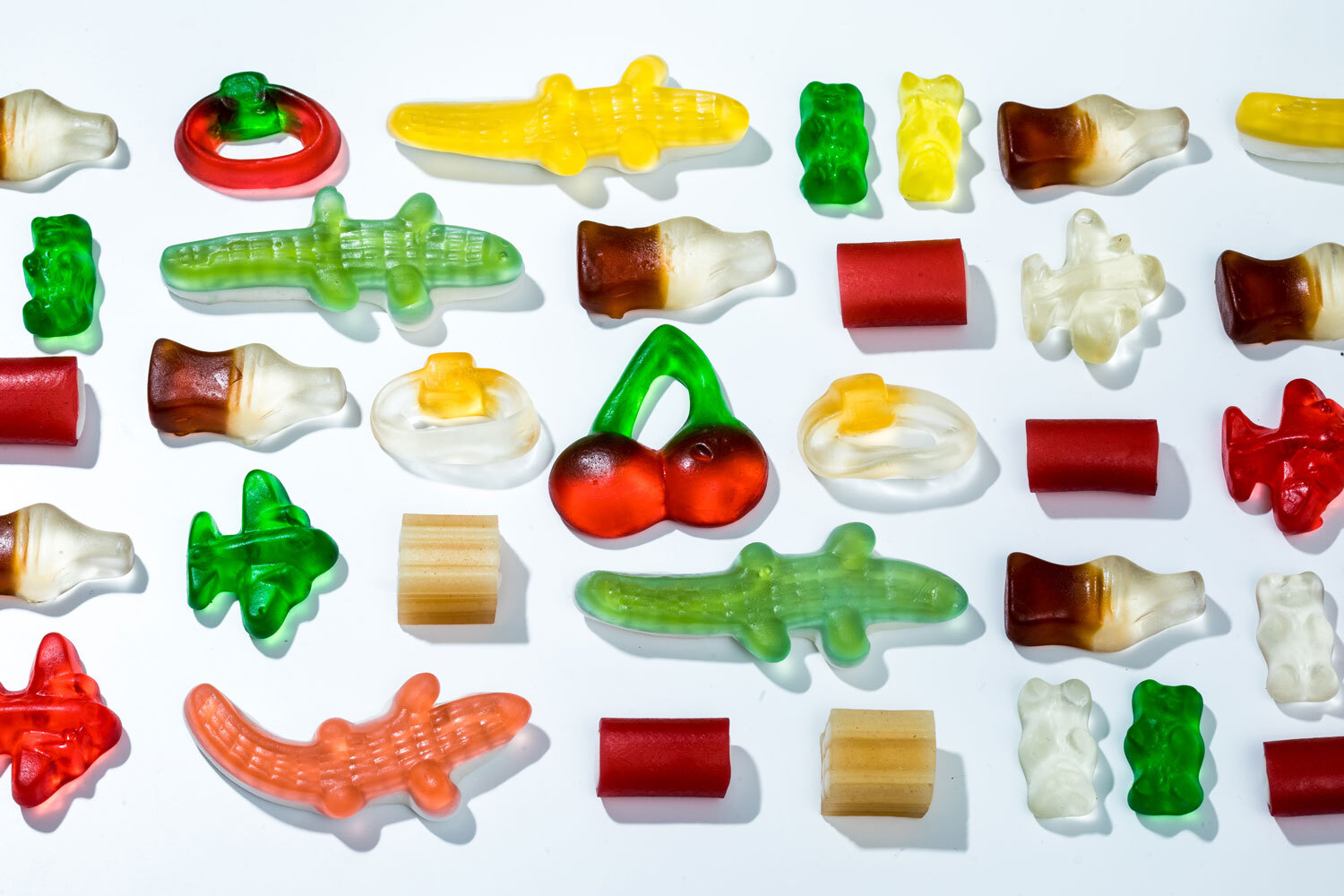


A hundred years ago, the first Haribo factory cranked up its confectionery machines on the banks of Germany’s Rhine River. Started by 27-year-old Hans Riegel, the business stayed modest and local—until the founder made a marvelous culinary discovery. The exact formula to his bear-shaped success remains a secret to this day, but its recipe includes gelatin, sugar, a copper kettle, a rolling pin, and the magic of thermodynamics.
Haribo Goldbear gummies are now one of the top-selling candies in the world, spawning dozens of copycats and filling hundreds of fingerprint-smudged waiting-room jars. The company has grown out of Riegel’s home city of Bonn with 16 factories across Europe, Asia, Australia, and South America. It’s slated to break ground on its first US production facility in Pleasant Prairie, Wisconsin, in fall or winter.
The company cooks up 100 million gummy bears a day—on top of numerous other mouth-puckering chews. It sells more than 1,000 varieties globally and launches fresh lines every season, like this summer’s limited Passport edition. “Because of the way we produce our candies, we can make a lot of flavors and profiles with agility,” says Lauren Triffler, head of corporate communications of Haribo of America. US gummy fanatics can only choose from a modest 19 options at the moment. The sheer scale of the company makes it a powerhouse for profit, but it also lets it redefine how the candy industry creates certain fruit flavors, says Yael Vodovotz, a food-innovation scientist at Ohio State University. “They follow the trends and make the choices that change tastes.”
Anointing a new flavor to the Haribo lineup, however, takes some confection-making perfection. The company’s food scientists test each recipe exhaustively for aroma, texture, and regional preferences. The last step is key to ensuring a gummy will succeed across multiple markets. For example, Triffler says, Americans and Germans don’t always agree on what a “lemon” candy should taste like, making it tricky to develop a single yellow piece for a mix that suits everyone’s tongues. The company even had to change up Riegel’s famous recipe when introducing Goldbears stateside in the 1980s.
In general, customers in the US and Latin America have more of a sweet tooth than snackers in Japan and Western Europe. But in the past decade or so, Triffler says American candy lovers have shifted to the sour side. “The kids really like the Zing bites and streamers and the Twin Snakes, which is the second best-selling flavor after the bears. You see that change in generations.” Even in the tart profiles, no two gummy recipes are the same. Some candies are covered in crunchy sugar crystals, while others layer distinct textures like marshmallow and gelatin. “There’s always entertainment value in the chew,” Triffler adds.
Experiments aside (the company won’t admit it, but the berry-blue Smurfs are an experiment that just happened to be a convenience store hit), there’s still a lot to learn about the chemistry of gummies. “A firm chew with a burst of flavor and plenty of servings in one bag” is what keeps Haribo customers coming back for more, Triffler says. Oddly enough, a favorite flavor doesn’t need to match up with its real-life fruity counterpart. The strawberry Goldbear is actually a bright lime color, but nobody seems to mind as long as the taste is consistent from bite to bite.
Beyond that, Haribo is quite tight-lipped about what makes their gummies such a culinary delight. But outside of the candy industry, food scientists are upfront about the challenges of crafting gummies. “Most gummy confections contain 5 to 10 percent fruit juice and the rest is sugar water,” Vodovotz says. “There are non-synthetic flavors and dyes, but they’re really still mostly chemicals.”
She switches up the traditional formula and uses freeze-dried fruits and powdered vegetables to design supplements with a gummy-like chew for cancer patients. Compared to the classic candy, these hold much more fiber and plant matter, which creates a jam-like consistency on the insides. Gelatin is a no-go because it’s not gluten-free or vegan—so, Vodovotz gets creative with a variety of gelling agents to account for the acidity and calcium levels of her ingredients. Grapefruit, for example, has a low pH, so it pairs best with agar as opposed to pectin or starch.
While Vodovotz aims to preserve as many natural compounds as possible to give her products a nutritional kick, her snack-y counterparts only borrow a few to spin out their artificial flavors. But there’s potential for this treat to do more than satisfy a sugary craving. “While the industry is associated with indulgence, I think they’re starting to notice that there are possibilities to use gummies as a healthier vehicle,” Vodovotz says.
Triffler points out that Haribo is also tinkering with vegan and gluten-free options. These future candies will hopefully hit the same tender notes that Riegel once simmered up with a modern-day, diet-inclusive twist. And though people’s tastes might change over time, in the end, they’ll always want two things: a gummy they can really sink their teeth into and a departure from the ordinary.
Correction: The article previously misstated that Haribo sells around 1,000 flavors in Germany. That number applies to global sales.
